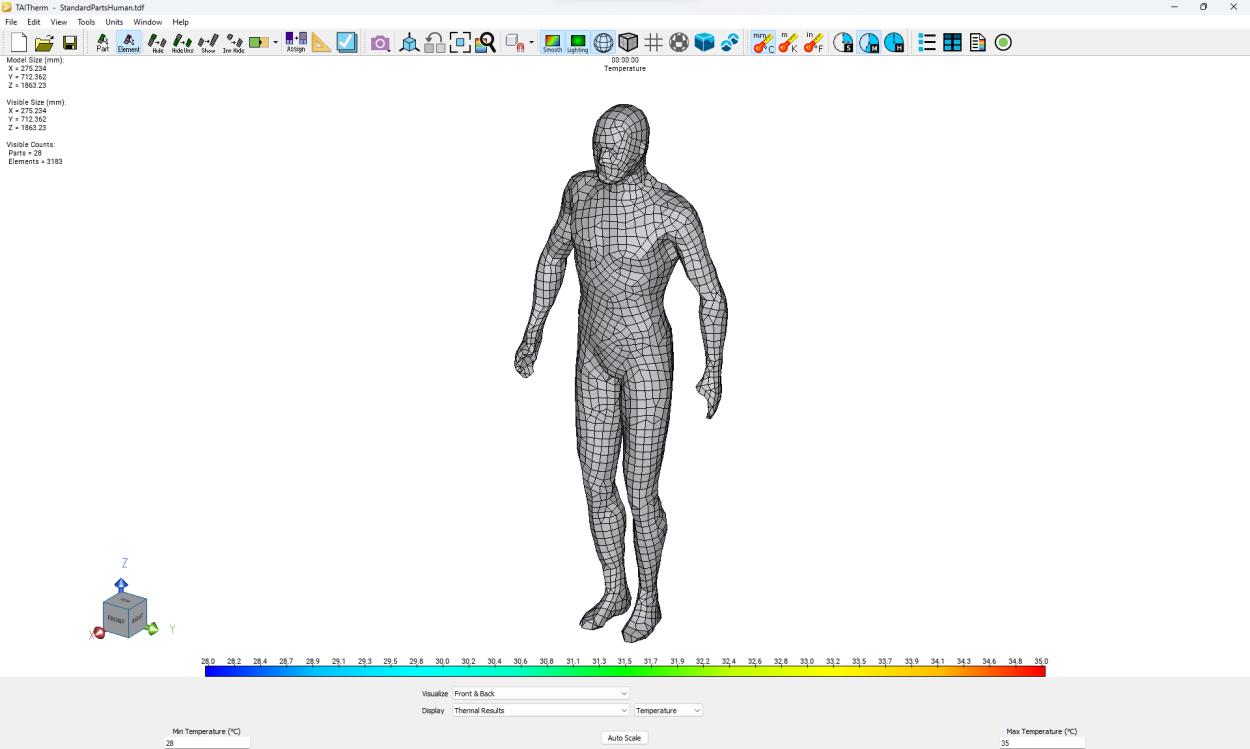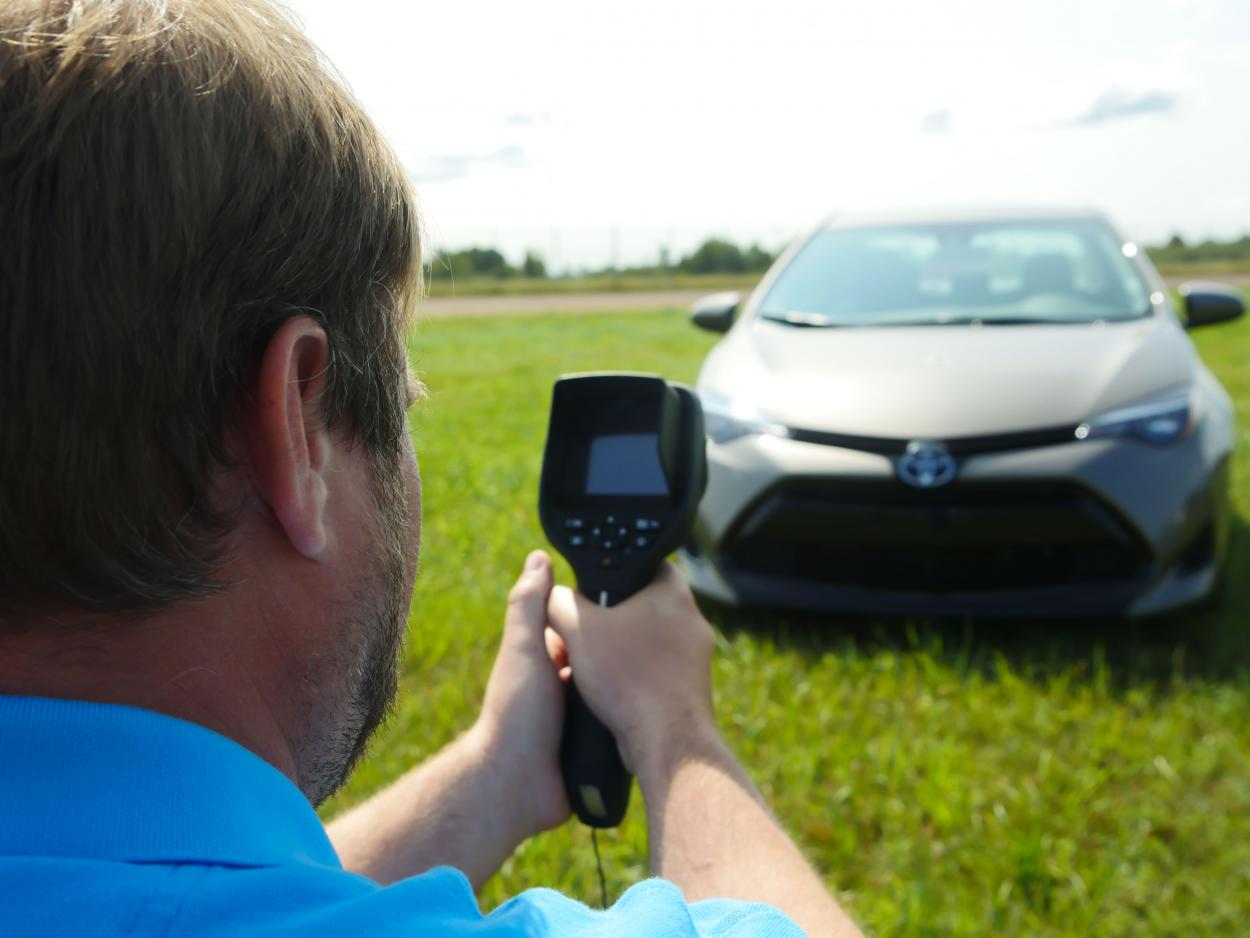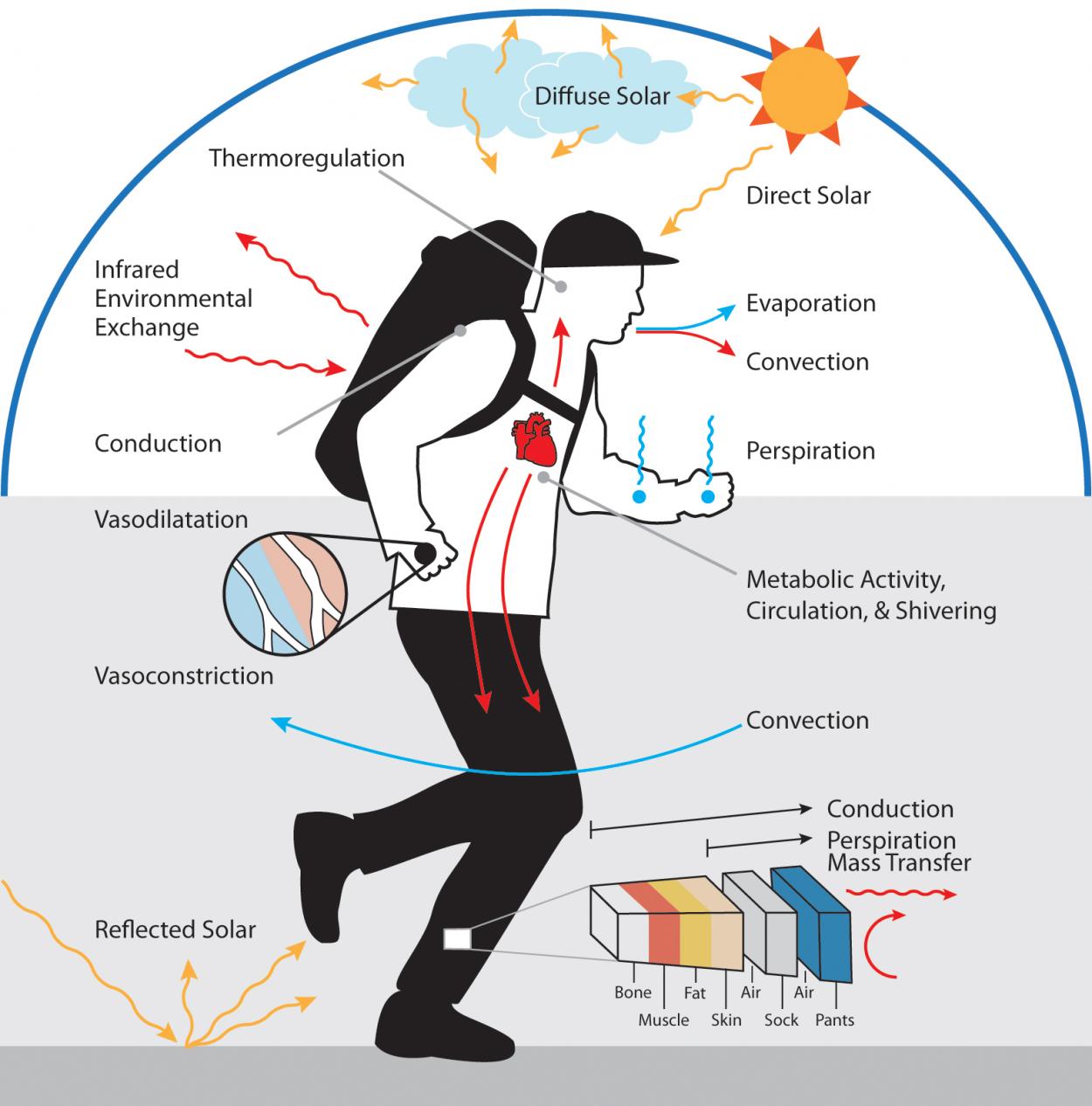In order to predict survival when exposed to extreme environmental conditions for prolonged periods of time, ThermoAnalytics has developed the world’s most advanced physiology definitions replete with feedback loops and circulatory responses.
Utilize Environmental and Physiology Models
Predicting human thermal survival involves simulation across several distinct domains to be computed simultaneously – the environmental conditions over time, a detailed human physiology model that includes thermoregulation, and clothing models to capture both heat transfer and mass transfer resistance. Humans are thermally quite fragile and many critical biological processes are highly sensitive to temperature, including cognition. Thermal survival is limited to the study of how the body responds to dehydration, hypo- and hyperthermia, ignoring the situational effects of reduced cognitive capacity on the choices an individual makes when overheated or suffering from cold exposure. However, human effectiveness can also be evaluated from the results of a survivability analysis.
Predicting Survivability with Thermal Analysis
In order to predict survival when exposed to extreme environmental conditions for prolonged periods of time, ThermoAnalytics has developed the world’s most advanced physiology definitions replete with feedback loops and circulatory responses such as blood perfusion, vasodilatation, and vasoconstriction. With appropriate scaling of geometry to represent a 5th to 95th percentile human body mass, human survivability can be accurately simulated for a wide range of purposes: man-overboard studies, industrial safety, and aircraft environmental control system (ECS) failure for FAA certification. For new or experimental aircraft, the ECS failure simulation methodology developed by ThermoAnalytics has been accepted by the Federal Aviation Administration.
Because thermal survivability analysis is depending on accurate environmental loading on the virtual human, a transient conjugate analysis of convection, conduction, and radiation, using TAITherm software is required. Furthermore, your environment’s geometry, such as an aircraft cockpit, operator station, or windowed building with solar loads are all relevant to computing the net energy loads on various body segments. Human survivability is essentially a post-processing analysis of the extended transient simulation, and thus our human model computes temperatures for individual geometry elements, and integrates these temperatures into body segments and an overall composite result.
Include Gear and Materials in Analysis
Survivability is also affected by clothing and equipment such as firefighting gear, clothing layers, and pilot helmets. Our human thermal models include layering of clothing on each body segment, and couples with perspiration rates to account for cooling by evaporation. Environmental humidity thus plays a critical factor in certain situations, which would also impact heat losses due to respiration.
Analyze Human Effectiveness
As global leaders in human thermal survival, our staff can provide a list of relevant technical publications and offers a no-obligation review of requirements to qualified organizations. Contact us to see what our technology can do for your organization.
You Might Also Be Interested In:

Accurate Comfort Predictions
Simulating human thermal comfort will provide the information needed to optimize the user experience and ensure product acceptance.
Our engineers can help you create a thermal simulation using TAIThermTM with the Human Thermal Extension. This will help you understand how altering the variables of your design affects the overall comfort of the human within your design.

Testing & validation services
Our thermal test experts will come to your site to collect real-world thermal data. Our team is equipped with tools that capture the complete operating environment, which allows for better simulations and more accurate predictions of performance.
After gathering test outcomes, our team will validate the simulation results from TAITherm by quantifying the error against physical test data. The validation process ensures that the model is accounting for all methods of heat transfer, and providing accurate results based on the operating environment.

Beyond Comfortable
Our Human Thermal Extension is the state-of-the-art technology for predicting human thermal comfort, safety, and effectiveness. It operates within our thermal analysis software, TAIThermTM, to comprehensively simulate human thermal sensation and thermoregulation under transient and asymmetric environmental conditions. Users can simulate all thermoregulatory responses based on many factors, including activity level. We have developed a comprehensive library of standard human models in various poses, including female and male physiologies. We have also developed an extensive clothing database for rapid model setup.
Getting Started
Let's Talk
If you would like to learn more about our Human Effectiveness service and how it can provide you with an actionable design direction, reach out! We will demonstrate how our expert engineering team can provide you with the results you need.
Support
We are here to work with you at every step. We support our customers throughout your service project with excellent communication; we are only a phone call or email away. Our commitment to you never changes.
